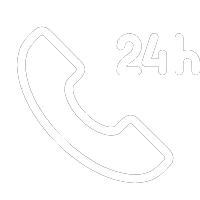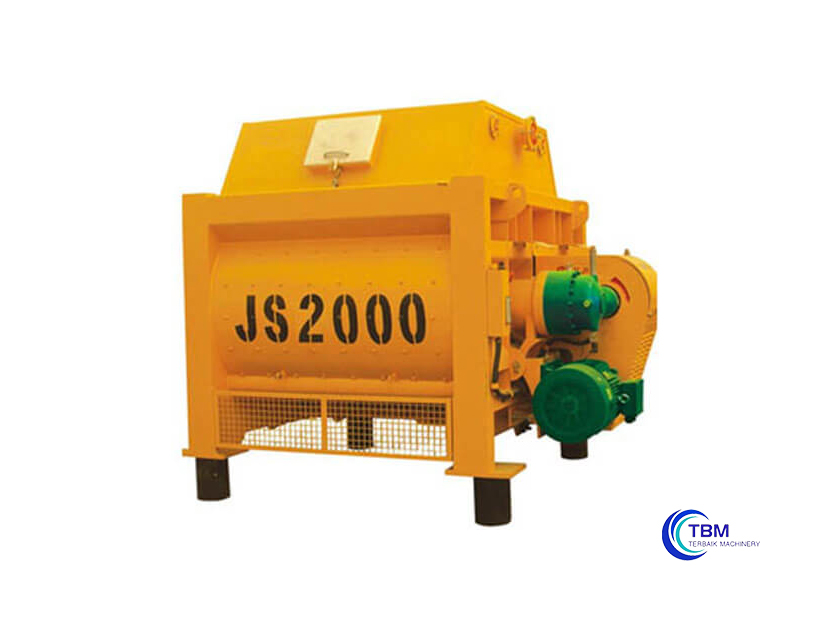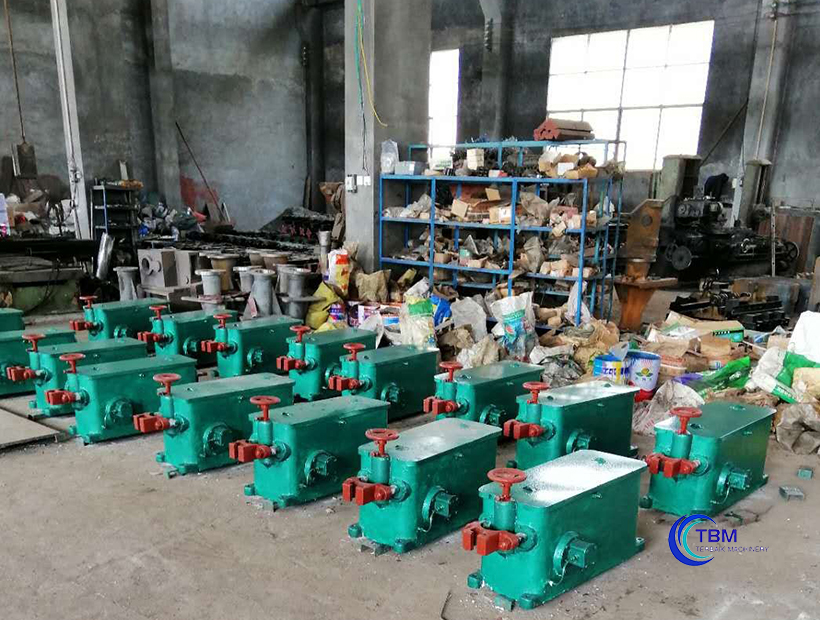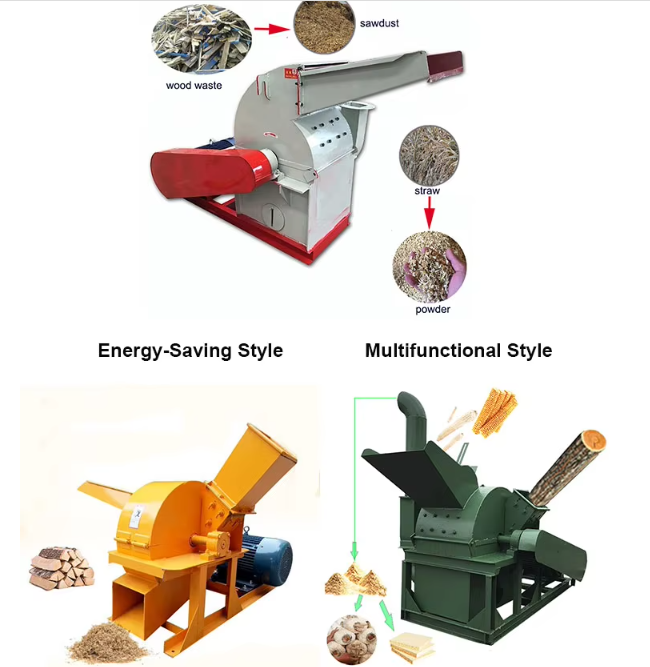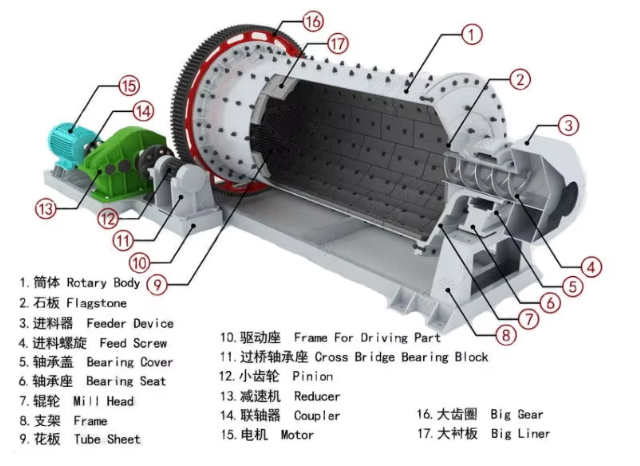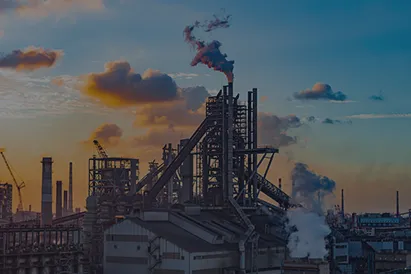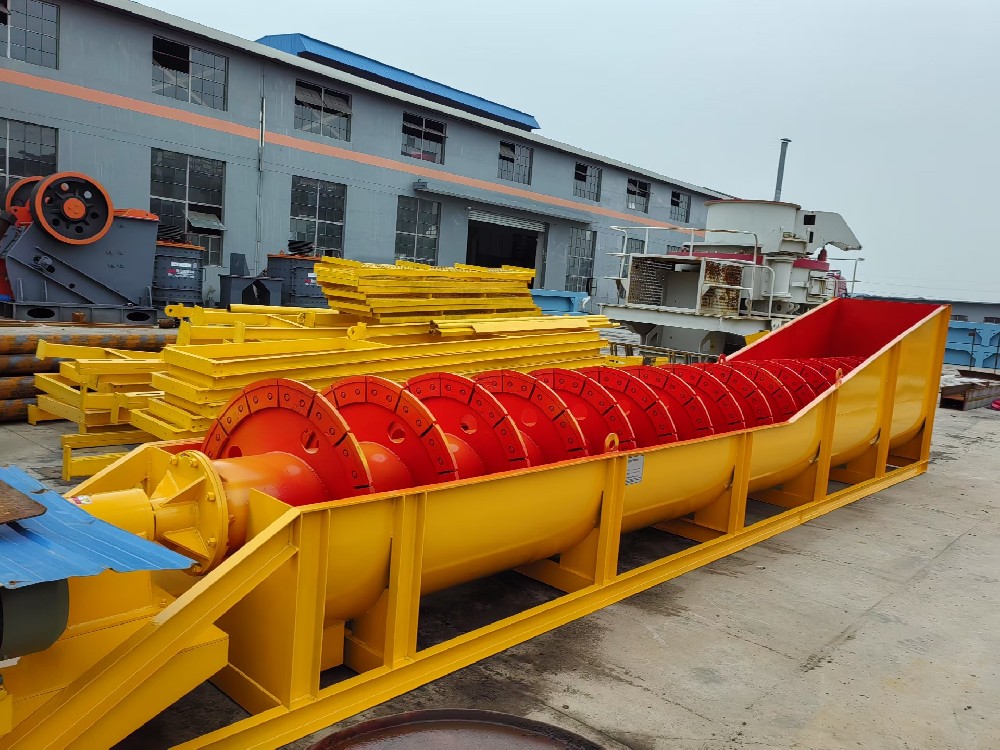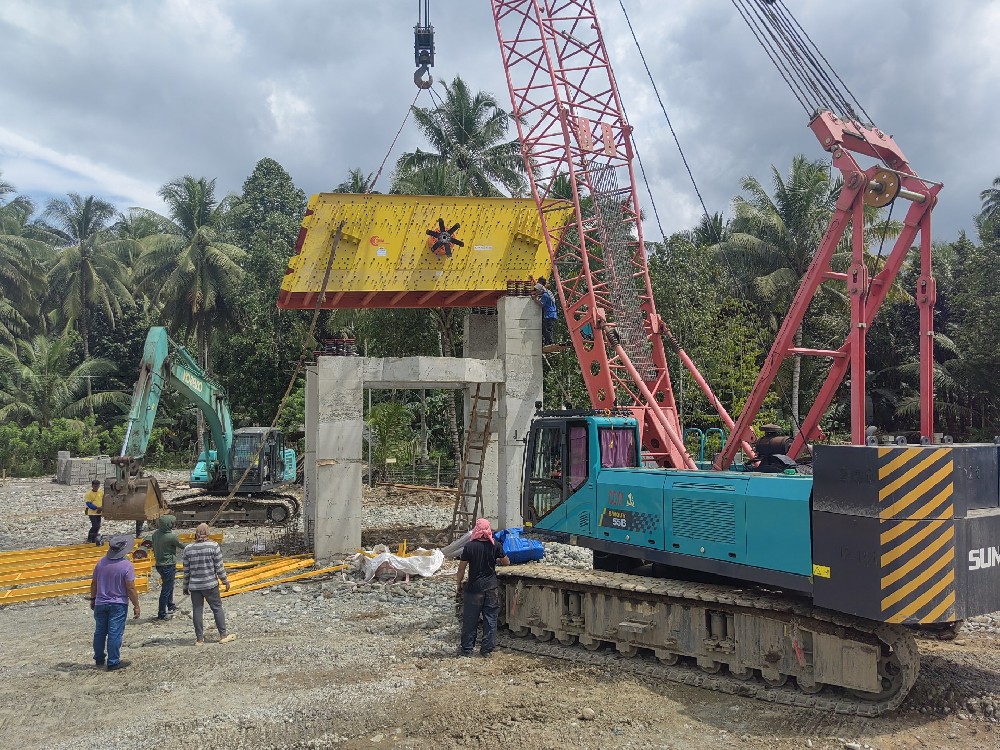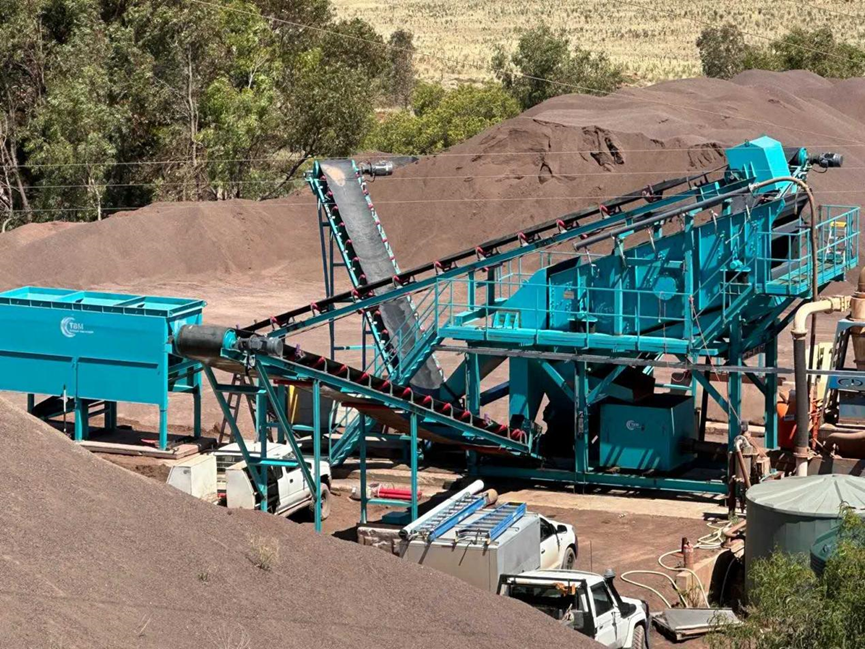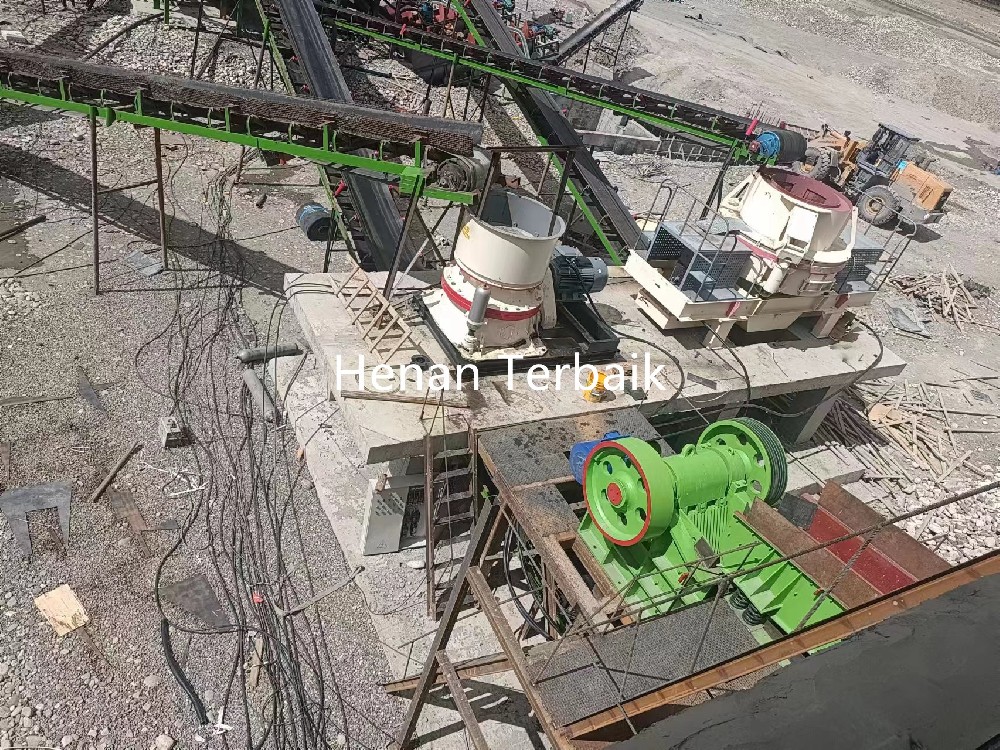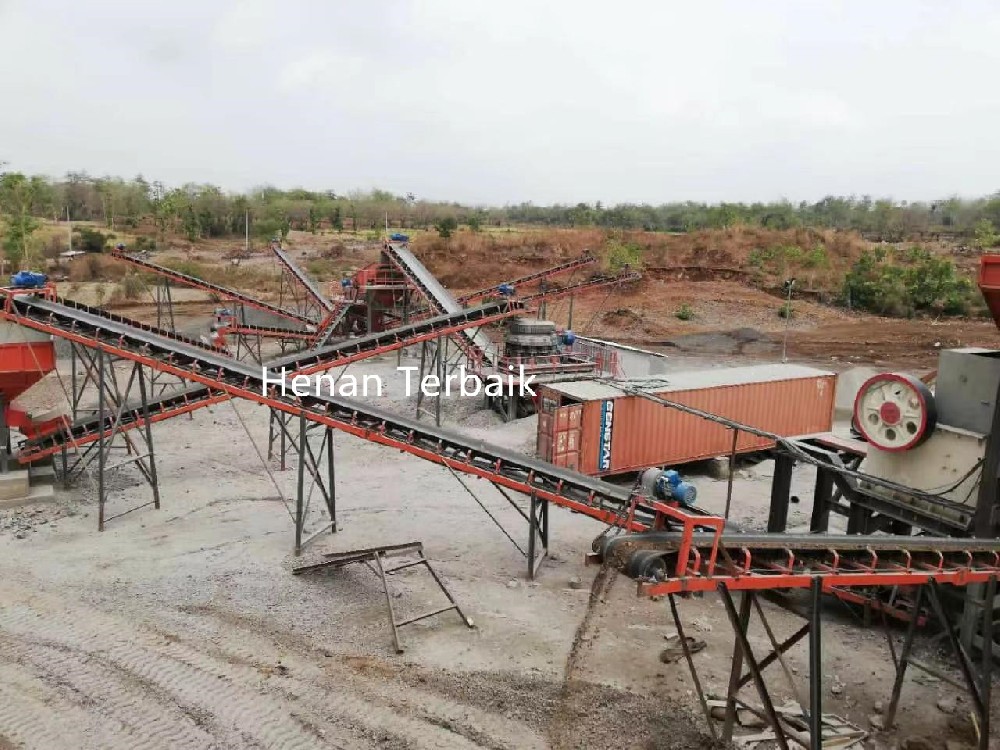If you want to know the price of the crushing line, you must first know the configuration process of the entire crushing line.
The configuration of the common gravel production line complete set of equipment generally adopts two-stage and three-stage crushing processes. Most sand and gravel plants usually adopt a two-stage one closed-circuit process, that is, the second stage crusher and the inspection and screening equipment form a closed circuit, so as to ensure that the product particle size meets the requirements and meets the demand for sand and gravel aggregates.
The complete equipment configuration of the sand and gravel production line mainly includes the following types:
1. Vibrating feeder + jaw crusher + Fine jaw crusher + belt conveyor + circular vibrating screen; 250-350 T pH dolomite crushing plant in Indonesia
2. Vibrating feeder + jaw crusher + cone crusher + belt conveyor + circular vibrating screen; 200TP H aggregate stone crushing plant in Philippines
3. Vibrating feeder + jaw crusher + impact crusher + belt conveyor + circular vibrating screen;
4. Vibrating feeder + jaw crusher + cone crusher + VSI sand making machine + belt conveyor + circular vibrating screen 350 pH pebble crushing plant
Crushing: The crushing process is generally divided into two-stage crushing or three-stage crushing. Commonly used crushing equipment includes jaw crusher, cone crusher, impact crusher, impact crusher, etc.
Among them, the most common combination in our small stone processing plant is a jaw crusher and a fine jaw crusher or an impact crusher combined to form a secondary crushing. Both of these equipment have a high cost performance, low investment, but high efficiency and guaranteed returns.
Screening: The screening process is generally operated in the later stage of the production line. For sand and gravel screening, we often choose a circular vibrating screen. It moves in a circular motion and is suitable for screening materials with high specific gravity and large particles.
In the production line, it mainly serves two purposes: one is to screen out materials that do not meet the requirements and reprocess them; the second is that it can choose one layer, double layer or multiple layers to screen the materials into several specifications of different sizes.
Conveying: Conveyors are the most numerous equipment in the production line, and they play the role of material transmission in the production line.
Feeder + jaw crusher + impact crusher (cone crusher) + sand washer + vibrating screen + conveyor belt (This is a very common production line configuration, and many stones are
currently using it. After the initial crushing by the jaw crusher, the impact crusher or cone crusher is used for secondary fine crushing to make the stone and sand of the particle size
required by the user, and then the sand washer is used to remove impurities and purify it before it can reach the finished product.)

Feeder + Fine jaw crusher + impact crusher + sand washer + vibrating screen + conveyor belt (the design of heavy fine jaw crusher is relatively high, but the finished product
particle shape is not very good, which requires the impact crusher to perform shaping treatment, and the sand washer removes unnecessary powder to improve the quality of the finished
product.)
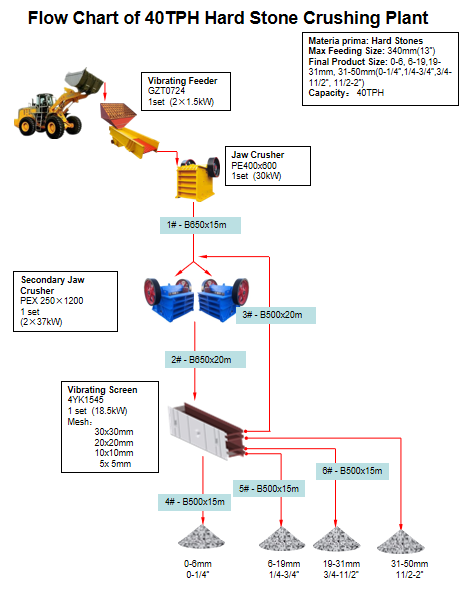
Feeder + jaw crusher + cone crusher + impact crusher + sand washer + vibrating screen + conveyor belt (This design can handle almost any ore material, and there is no pressure
even if the output is thousands of tons per hour, which is suitable for large or super-large stone plant production.)

FAQ: How to choose a suitable spring cone crusher ?
1. what is the raw material you want to crush ?
2. what is the input size of your raw stone ?
3. what is the capacity per hour do you need ?
4. what is the output size do you need ?
RElate products details ,it can help you make right model machines
